Padel is a sport that features many different types of shots, with each of them having different uses and techniques. If you want to become more knowledgeable about the sport, a good place to start is by learning about each of the shots in order to understand what they look like and what the purpose of each one is!
The ‘smash’ is a great shot to learn about first because of how often it is used. In every padel point you watch, there is a high chance that you’ll see one of the players attempt a smash shot as it’s a great attacking threat and can allow you to win the point straight away if it’s played well. In this post I’ll teach you exactly what the smash shot is, the advantages it can offer you and whereabouts on the court you should be trying to target!
So, what is a smash in padel?
A smash is one of the most popular padel shots. To play the smash, the ball must be above head height. As it drops, the player must push upwards by straightening their legs and strike the ball into the ground on the opponent’s side of the court. If the shot is hit well, the opponent will not be able to return it.
Newcomers to padel often think that there’s just one basic way to play a smash shot, which is the method that I’ve just described above. However, there’s actually a few different types of smash that you can choose to play! Each of them have slightly different techniques and are used in different game situations, allowing you to affect a point in different ways. The types of smash are as follows:
- The Flat Smash
- The Topspin Smash
- The Bandeja
- The Vibora
- The Gancho
In the sections below I’ll take you through each type of smash briefly and explain a little bit about them!
The Flat Smash
The flat smash is primarily used when you are in a dominant position on the court, ideally close to the net. If you’re in this position and receive a weak shot from your opponent, such as a lob (click here if you’re not sure what a ‘lob’ is) that is easily within your reach, or a forehand/backhand that is looped up slowly towards you, this represents the perfect opportunity to hit a flat smash.
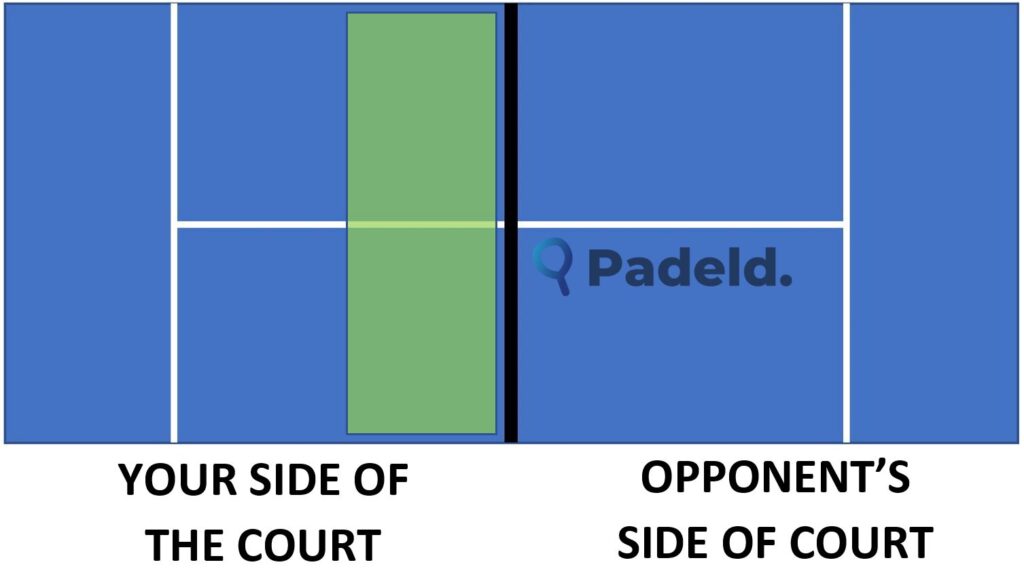
The flat smash is simply a smash that is hammered downwards into the ground on your opponent’s side of the court. It’s played with plenty of power, and doesn’t require you to impart any spin onto the ball. When I’m playing this shot, I like to try to hit the ball somewhere in the zone shown in the diagram below!
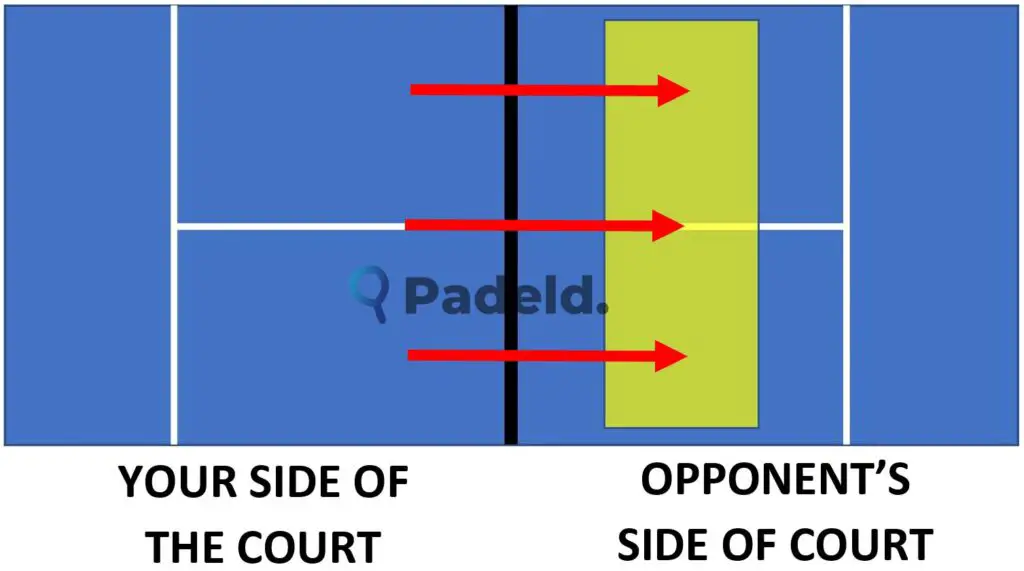
Because you should ideally be playing this shot from close to the net, your intention should be to smash the ball into the ground and have it travel straight over the wall and out of the court. If you can do this, it’s highly likely that you’ll win the point as your opponent will have no chance of returning the ball!

The Topspin Smash
The topspin smash is a type of smash that also requires you to be in a strong position on the court (relatively close to the net) in order for it to be fully effective. If you’re an amateur player, I’d only consider playing the topspin smash when you find yourself in the positions shown in the diagram below. Professional players that feature on the World Padel Tour will usually be able hit the shot from further back on the court due to them having better racket control, having an ability to impart more topspin, and having greater accuracy/power on their shots!

Similarly to the flat smash, the topspin smash is primarily used when your opponent attempts to play a lob shot and doesn’t quite get it right! If the lob isn’t powerful enough and fails to go over your head, and you’re in one of the positions I showed above, then using the topspin smash in response is a great option!

To hit this shot, you should first try to position yourself underneath the ball. Once you’re in a good position, push upwards towards the ball and make contact with it above your head. The way you make contact with the ball is the most critical aspect of this shot, as you need to generate plenty of topspin. Try to focus on hitting the ball with the top of your racket, and think about ‘brushing’ your racket over the top of the ball as you hit it. I’m a right handed player, so when I play the topspin smash I imagine myself trying to hit the red part of the ball shown in the diagram below, before ‘brushing’ my racket over the ball in the direction of the arrow. Left handed players should target the blue part of the ball.
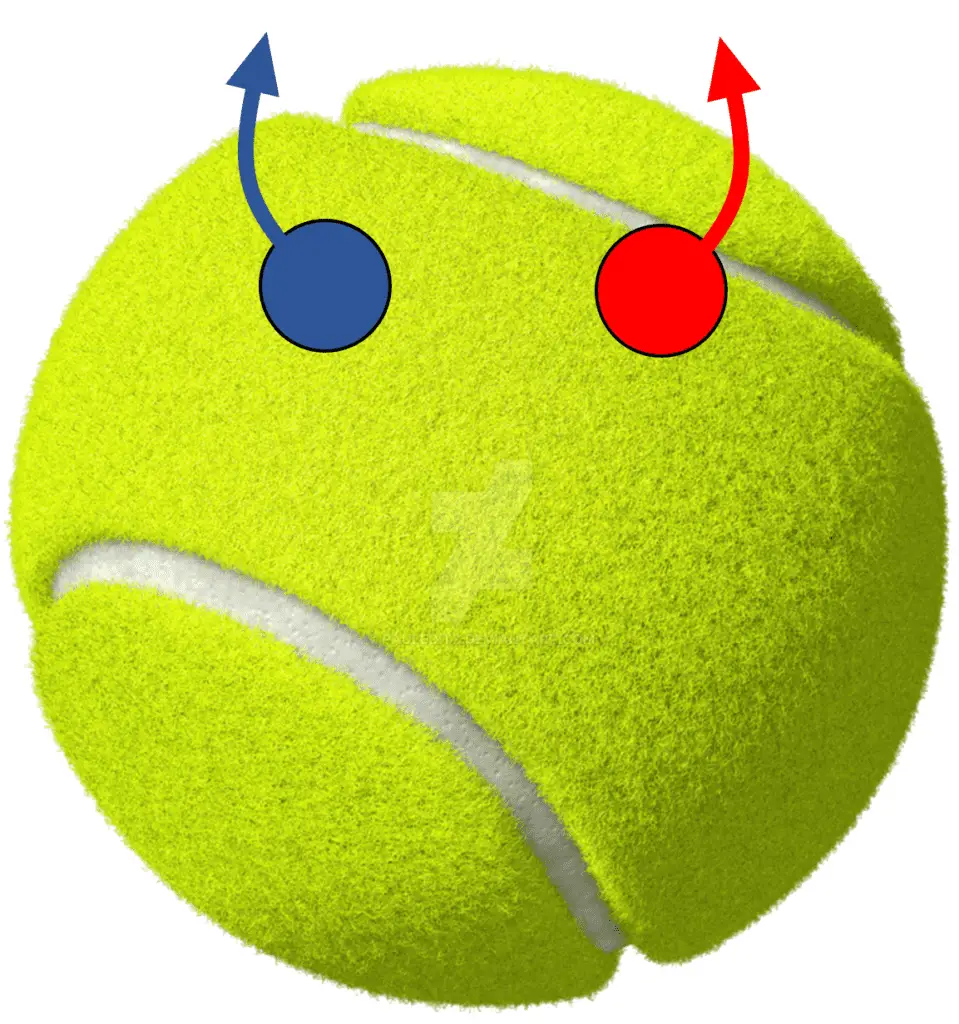
If the topspin smash is played well, it will hit the ground on your opponent’s side of the court, then it will hit their back glass before bouncing over the side wall and out of the court. This will make it very difficult for your opponent to return! The angle of your smash, as well as the area of the court you target is key for this to happen. When you hit the topspin smash, you should be aiming to land the ball in the areas on the court that I’ve highlighted in the diagram below. If you hit the ball too far to either side of these highlighted zones then you risk the ball either not making it to the fence, or hitting the fence and bouncing easily back into the court!
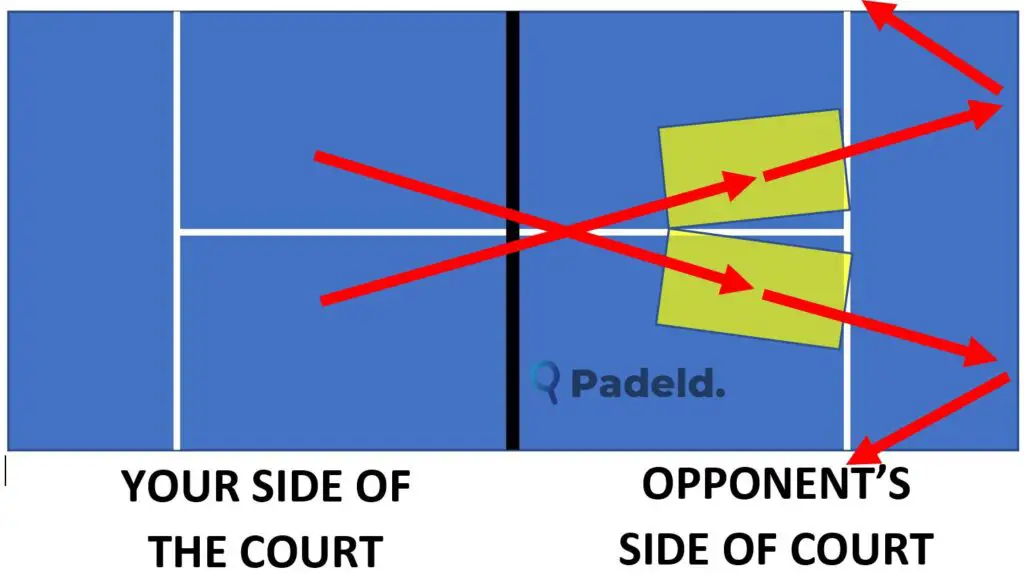
The Bandeja
The Bandeja is a defensive smash that is hit at a low, controlled speed with a slight amount of backspin applied to it. The main aim when using the Bandeja should be to hit it into an area of the court that is difficult for your opponents to deal with, allowing you the time you need to move back into a commanding position in the centre of the court.
Like most smashes in padel, the Bandeja is most often played against lobs that don’t quite have the amount of power on them to go fully over your head. In my experience, Bandejas are most often played when the ball has been lobbed and is going to land in the positions shown in the diagram below! These kinds of positions are probably too far back on the court to try to hit a flat smash, and although a topspin smash could be hit from these positions (by a skilled padel player) the Bandeja represents a much lower risk alternative.

To play the Bandeja, you first need to look out for an appropriate lob from your opponent. As soon as you see them play the lob, try to judge whether they’ve got enough distance on the ball for it to land at the back of the court. If the lob looks like it will land around the service line or just behind it, turn your body sideways and retreat a little until you position yourself roughly in the spot where the ball is going to land. As the ball is dropping, keep your eyes on it and lift your racket up towards shoulder level, preparing to hit the ball. Once it has dropped to around head height, swing your racket forwards through the ball. As you make contact, be sure to brush your racket down the back of the ball slightly in order to apply the backspin.
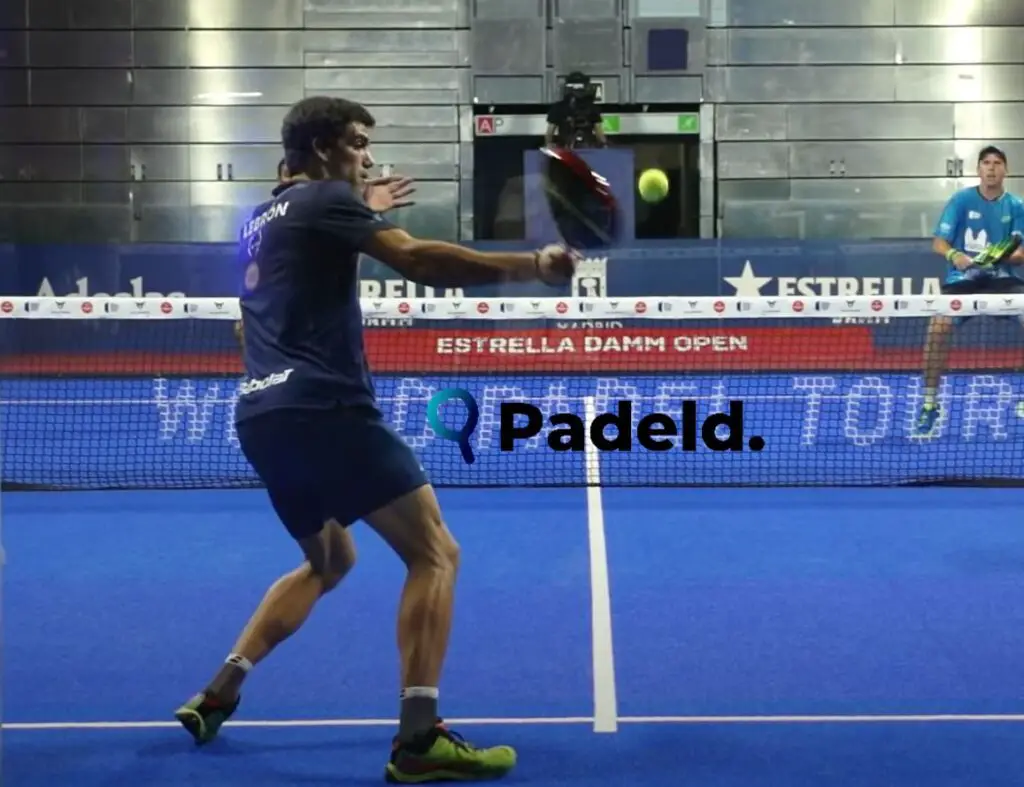
There is no need to hit the Bandeja with a large follow through, as it’s not a shot that requires a lot of power! Concentrate primarily on the placement of the shot, and once you’ve hit the ball, make sure you move forwards towards the net to take up a commanding position on the court.
If you’re wondering where the shot should be placed, there are no hard and fast rules for this. I would simply suggest targeting open parts of your opponent’s court and exploiting the gaps between the opposing duo. Failing that, targeting the back corners on either side of the opponent’s court is always a good strategy!
The Vibora
The Vibora is an attacking smash that is hit with plenty of pace and plenty of spin! It has a lot more pace and slice applied to it than a smash like the Bandeja. The aim when using the Vibora is to finish the point or to put your opponent under so much pressure that they will end up losing the point when it’s time for their next shot.
The Vibora is played against lob shots that don’t make it over your head. These lobs will usually be around shoulder height as they reach you, making them nice and comfortable for you to strike aggressively. Additionally, to play the Vibora you will probably be in or around the positions on the court that I’ve highlighted below. This is an attacking smash, so it is usually played from a little more of an advanced position than a shot like the Bandeja which is defensive in nature.

To play the shot, first ensure that you’re in a fairly advanced position on the court like the ones I highlighted above. Then, once you see your opponent hit a lob that fails to travel above your head, get yourself in position underneath the ball and set your feet just wider than shoulder width apart. Watch the ball as it drops down towards you and bring your racket up behind your head as you start the motion of the shot. When the ball is low enough to strike, extend your arm and hit the ball. As you do so, try to brush your racket around the side of the ball, thus applying plenty of spin and slice. I’m right handed, so I like to think about making contact with the ball in the location shown in red below, and dragging my racket around the side of the ball in the direction of the arrow. Also, remember to really commit to the shot and hit it with plenty of power, as this will make it much more effective.
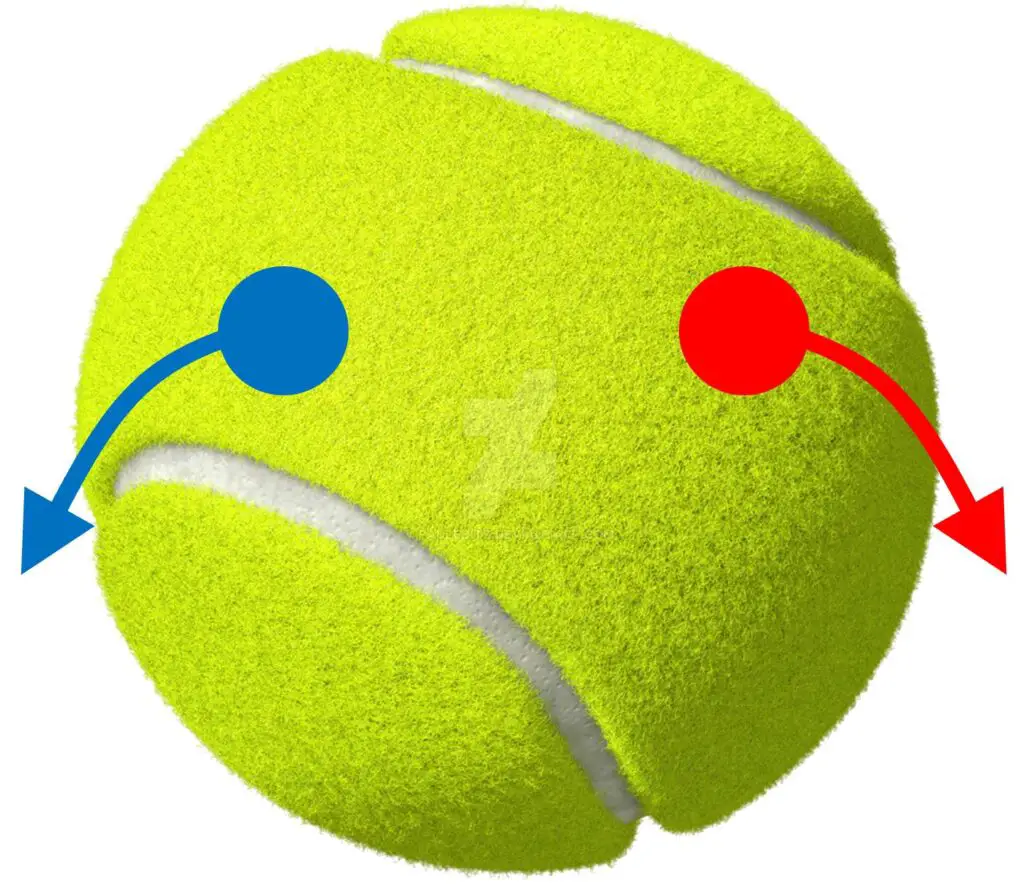
The Vibora can be used to target a variety of places on the court, but I personally like to target the side glass. Because I’m a right handed player, I will most often target the glass on the left side of the opponent’s court, or aim for the back left corner of their court. Left handed players would probably find it easier to target the right side of the court with this shot. Hitting the Vibora into the glass is a great option because of the spin and slice that has been applied to the ball. This could make it hard for your opponent to deal with once the ball makes contact with the surface!

The Gancho
The Gancho is a relatively unknown type of smash that is one of the most defensive forms of the shot. In Spanish, the word gancho means ‘hook’ – and you’ll see how a hook is relevant when I show you how the shot is played! The Gancho is primarily used when you find yourself slightly unbalanced, out of position, and wanting to regain a strong position on the court.
So, when exactly should you be looking to play this shot? Firstly, the shot is most often used when your opponent plays a lob shot that forces you to take a few steps backwards, away from your commanding position close to the net. It is even more appropriate to play this shot if the lob travels over your non-racket shoulder. So if you’re a right handed player and the lob ends up going over your left shoulder, or if you’re a leftie and the lob goes over your right shoulder, you’re in a perfect scenario to play the Gancho.
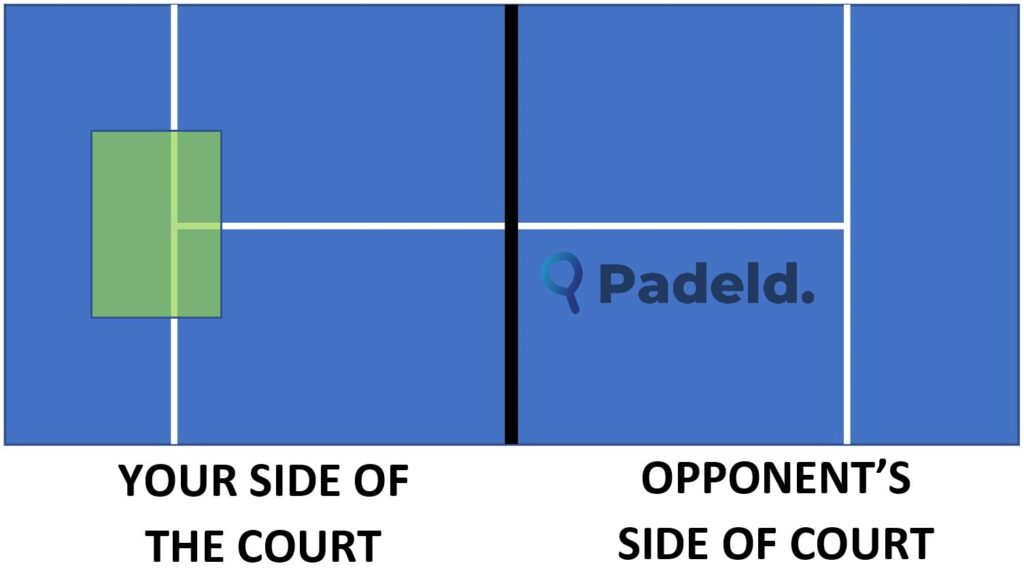
To hit the Gancho you should first wait for the lob to be played over your non-racket shoulder. When you spot this, take a couple of steps backwards and jump up in the air slightly. As you do so, lift your racket arm straight up in the air and make contact with the ball slightly in front of your body. There’s no need to impart any spin onto the ball when hitting the Gancho. Instead, focus on hitting a straight, relatively low speed shot into your opponent’s side of the court. The low speed of the shot will enable you to easily regain your strong position in the centre of the court close to the net whilst your opponent is waiting to return the ball.
Most professional players that I see hitting the Gancho usually aim for either side glass on the opponent’s side of the court. However, this isn’t the only good place to target! For example, if your opponents are split and both find themselves close to the side glass, there may be an opportunity to hit the Gancho into the gap between them. Make sure to watch your opponent’s court position and make a judgement as to where would be best to target!
A lot of people wonder why they should use the gancho rather than the Vibora and the Bandeja, and the answer to this is pretty simple! The Gancho is more suitable to play against lobs that travel directly over your head or your non-racket shoulder because these lobs don’t allow you to extend your racket arm out to the side in order to hit the ball. Both the Vibora and the Bandeja require a bit of space to extend your racket arm out to the side, and therefore they aren’t really suitable for playing against this type of lob. It’s much easier to put your racket above your head and ‘hook’ the ball out of the sky by using the Gancho instead!
Summary
I hope this post has given you a good introduction to what a smash is, and the different types that exist within the sport of padel. If you get comfortable playing each type of smash and know when to use all of them, you will make yourself a much more effective player. This post had quite basic guides on how to play each type of smash, but soon I’ll have much more in-depth guides here on Padeld.com on how to hit each of them!
The most important thing to remember about the smash in padel is that when you get a chance to use one, make sure you fully commit to one type of smash. Think clearly and don’t get caught in two minds, as it is this type of indecision that can lead to you playing a poor shot!
